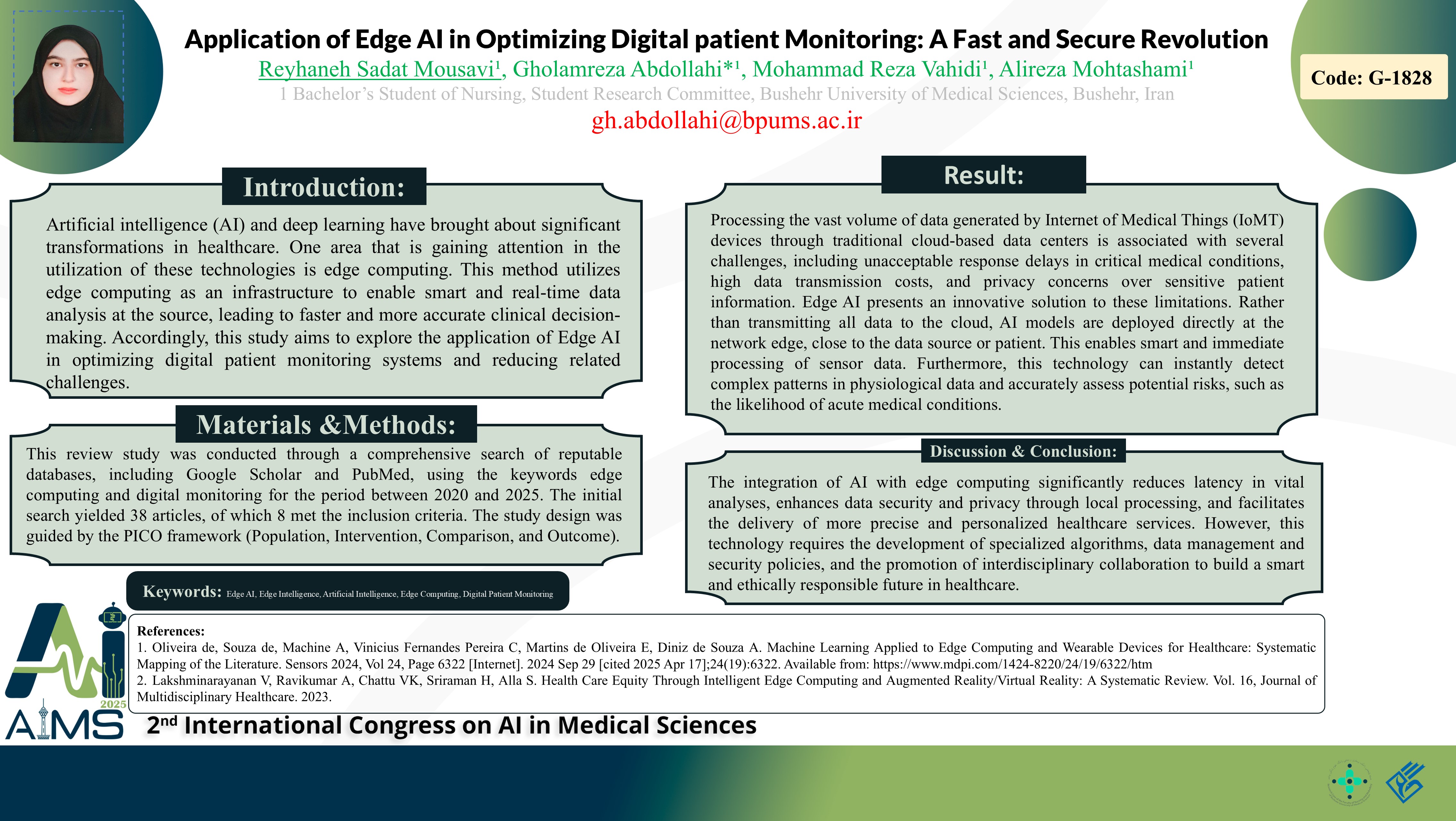کاربرد هوش مصنوعی لبه (Edge AI) در بهینهسازی پایش دیجیتالی بیماران: انقلابی سریع و ایمن
کد: G-1828
نویسندگان: Reyhaneh Sadat Mousavi ℗, Gholamreza Abdollahi *, Mohammad Reza Vahidi, Alireza Mohtashami
زمان بندی: زمان بندی نشده!
برچسب: سیستم های تصمیم یار بالینی
دانلود: دانلود پوستر
خلاصه مقاله:
خلاصه مقاله
Background and aims: Artificial intelligence (AI) and deep learning have brought about significant transformations in healthcare. One area that is gaining attention in the utilization of these technologies is edge computing. This method utilizes edge computing as an infrastructure to enable smart and real-time data analysis at the source, leading to faster and more accurate clinical decision-making. Accordingly, this study aims to explore the application of Edge AI in optimizing digital patient monitoring systems and reducing related challenges. Method: This review study was conducted through a comprehensive search of reputable databases, including Google Scholar and PubMed, using the keywords edge computing and digital monitoring for the period between 2020 and 2025. The initial search yielded 38 articles, of which 8 met the inclusion criteria. The study design was guided by the PICO framework (Population, Intervention, Comparison, and Outcome). Results: Processing the vast volume of data generated by Internet of Medical Things (IoMT) devices through traditional cloud-based data centers is associated with several challenges, including unacceptable response delays in critical medical conditions, high data transmission costs, and privacy concerns over sensitive patient information. Edge AI presents an innovative solution to these limitations. Rather than transmitting all data to the cloud, AI models are deployed directly at the network edge, close to the data source or patient. This enables smart and immediate processing of sensor data. Furthermore, this technology can instantly detect complex patterns in physiological data and accurately assess potential risks, such as the likelihood of acute medical conditions. Conclusion: The integration of AI with edge computing significantly reduces latency in vital analyses, enhances data security and privacy through local processing, and facilitates the delivery of more precise and personalized healthcare services. However, this technology requires the development of specialized algorithms, data management and security policies, and the promotion of interdisciplinary collaboration to build a smart and ethically responsible future in healthcare.
کلمات کلیدی
Edge AI, Digital Patient Monitoring
